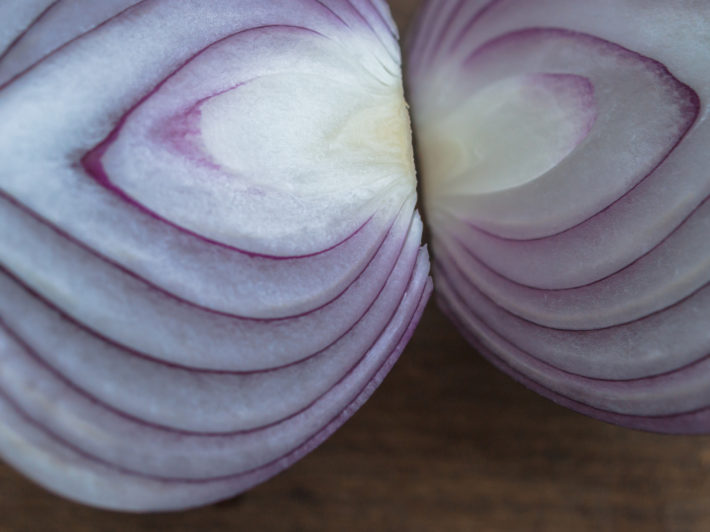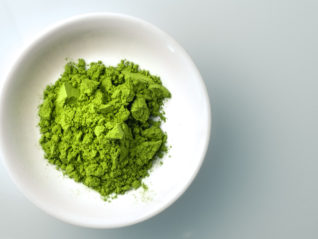
by Lewis Chang, PhD
Introduction
A quick search on ClinicalTrials.gov identified, as of this writing, 58 quercetin-related clinical intervention studies that are currently ongoing (19) or have been completed (39). Diverse health conditions, such as chronic obstructive pulmonary disease, type 2 diabetes, endothelial dysfunction, dyslipidemia, stroke, hepatitis C, acid reflux, inflammation, and oxidative stress, are the subject of interest. And in recent days quercetin’s role in immune health is getting a lot of attention as well. So what exactly is quercetin, where is it from, and what biological properties does it have that have attracted researchers’ attention?
Humans have had a long history of discovering remedies from plants. Dietary flavonoids are a large family of plant compounds sharing a polyphenolic structure and can be categorized into six major subfamilies: anthocyanidins, flavan-3-ols, flavanones, flavones, flavonols, and isoflavones.1
Dietary sources and intake
Quercetin is one of the better known flavonoids from the flavanol subfamily.1 The main dietary sources of quercetin for humans are apples, berries, capers, onions, tomatoes, kale, broccoli, nuts, buckwheat and tea.1 How much dietary quercetin (or flavonols) do humans consume? One study involving US health professionals reported a mean flavanol intake of 20 mg per day; about 75% of the total was quercetin.2 Data from a group of nurses in the US revealed an average intake of 15.4 mg quercetin per day.3 However, human consumption behavior is very complex; we are not eating the same things day after day. Some individuals may consume as much as 77 mg per day dietary quercetin, while others consume as little as 1 mg per day.4 The way food is prepared (boiling, frying, etc., can lower the bioavailability) and stored can also have an impact on quercetin concentration. This means many people are not getting the health benefits of quercetin.
Anti-inflammatory and antioxidative properties
A major health benefit of quercetin comes from its antioxidant (antioxidative) and anti-inflammatory properties.5 Inflammation is an essential immune response when facing pathogens (e.g., virus, bacteria, and fungus) or dangers (e.g., tissue damage caused by free radicals, cholesterol, amyloid beta, or asbestos). One of the major innate defense mechanisms is the activation of NLRP3 inflammasome (protein complexes in the cell that can sense signals from pathogens or dangers), leading to production of IL-1β, an important compound that mediates many aspects of inflammatory responses.6 However, dysregulated activations of inflammasome have been linked to initiation and progression of immune and inflammatory disorders such as atherosclerosis, inflammatory diseases, type 2 diabetes, autoimmune diseases, Alzheimer’s disease, and obesity, as well as collateral tissue damages that occur during infections.6,7 Quercetin has been shown to modulate NLRP3 inflammasome. In several experimental models of inflammatory conditions (including infections), quercetin reduced the production of reactive oxygen species and inhibited the overexpression of different components of NLRP3 inflammasome, resulting in reduced activation of NLRP3 inflammasome and leading to decreased secretion of IL-1β.8,9
Quercetin can also neutralize reactive oxygen species that are known to increase ER stress and mitochondrial dysfunction, both of which can activate NLRP3 inflammasome.10,11 Further, quercetin suppresses NF-κB pathway that also leads to reduced activation of NLRP3 inflammasome and productions of proinflammatory cytokines.12 These data demonstrate quercetin’s involvement in multiple pathways leading to modulation of NLRP3 inflammasome and reduction of downstream proinflammatory cytokine levels.
Other researchers have also discovered quercetin’s role in regulating immunity. For example,
- Quercetin reduced TNF-α production in macrophages and lung epithelial cells when stimulated by LPS, an endotoxin found in bacteria that triggers immune response.13,14 This suggests quercetin modulates TNF-α-mediated induction of inflammatory cascades.
- Quercetin exhibited a regulatory effect on several properties of immune cells such as inhibiting histamine and cytokine release from mast cells and inducing gene expression and production of Th-1-derived interferon (IFN)-g, as well as downregulating Th-2-derived IL-4 production by normal peripheral blood mononuclear cells.15,16 This suggests quercetin may have antiallergic properties.
- Quercetin inhibited cells from being infected with influenza virus, Zika virus, and Ebola virus via interaction with viral hemagglutinin protein, inhibited virus entry into the cell, or reduced virus replication.17-19 This suggests quercetin has antiviral properties.
The antioxidant and anti-inflammatory as well as immunomodulatory properties of quercetin have inspired researchers to investigate its clinical effects. Quercetin supplementation at ≥ 500 mg/day significantly reduced fasting plasma glucose among patients with metabolic syndrome and related disorders,20 showed a small but significant reducing effect in circulating C-reactive protein levels,21 and significantly reduced blood pressure in cohorts largely made up of normotensive individuals.22 Also, a higher dose of quercetin has been shown to reduce upper respiratory tract infection severity and sick days in older adults.23
Summary
Naturally, more clinical investigation is greatly needed to fully understand quercetin’s clinical application in immune health and various inflammatory conditions. Nevertheless, with so much researchers have learned regarding quercetin and its beneficial biological properties, the future research direction of quercetin looks very promising.
Citations
- Panche AN et al. Flavonoids: an overview. J Nutr Sci. 2016;5:e47.
- Sampson L et al. Flavonol and flavone intakes in US health professionals. J Am Diet Assoc. 2002;102:1414-1420.
- Lin J et al. Dietary intakes of flavonols and flavones and coronary heart disease in US women. Am J Epidemiol. 2007;165:1305-1313.
- Cassidy A et al. Higher dietary anthocyanin and flavonol intakes are associated with anti-inflammatory effects in a population of US adults. Am J Clin Nutr. 2015;102:172-181.
- Anand David AV et al. Overviews of biological importance of quercetin: a bioactive flavonoid. Pharmacogn Rev. 2016;10:84-89.
- Guo H et al. Inflammasomes: mechanism of action, role in disease, and therapeutics. Nat Med. 2015;21:677-687.
- Chen IY et al. Response of host inflammasomes to viral infection. Trends Microbiol. 2015;23:55-63.
- Wang C et al. Quercetin and allopurinol ameliorate kidney injury in STZ-treated rats with regulation of renal NLRP3 inflammasome activation and lipid accumulation. PLoS One. 2012;7:e38285.
- Hu QH et al. Allopurinol, quercetin and rutin ameliorate renal NLRP3 inflammasome activation and lipid accumulation in fructose-fed rats. Biochem Pharmacol. 2012;84:113-125.
- Wang W et al. Quercetin and allopurinol reduce liver thioredoxin-interacting protein to alleviate inflammation and lipid accumulation in diabetic rats. Br J Pharmacol. 2013;169:1352-1371.
- Jiang W et al. Quercetin suppresses NLRP3 inflammasome activation and attenuates histopathology in a rat model of spinal cord injury. Spinal Cord. 2016;54:592-596.
- Zhang QY et al. Quercetin inhibits AMPK/TXNIP activation and reduces inflammatory lesions to improve insulin signaling defect in the hypothalamus of high fructose-fed rats. J Nutr Biochem. 2014;25:420-428.
- Manjeet KR et al. Quercetin inhibits LPS-induced nitric oxide and tumor necrosis factor-alpha production in murine macrophages. Int J Immunopharmacol. 1999;21:435-443.
- Huang R et al. Quercetin protects against lipopolysaccharide-induced acute lung injury in rats through suppression of inflammation and oxidative stress. Arch Med Sci. 2015;11:427-432.
- Nair MP et al. The flavonoid, quercetin, differentially regulates Th-1 (IFNgamma) and Th-2 (IL4) cytokine gene expression by normal peripheral blood mononuclear cells. Biochim Biophys Acta. 2002;1593:29-36.
- Kimata M et al. Effects of luteolin, quercetin and baicalein on immunoglobulin E-mediated mediator release from human cultured mast cells. Clin Exp Allergy. 2000;30:501-508.
- Wu W et al. Quercetin as an antiviral agent inhibits influenza A virus (IAV) entry. Viruses. 2015;8.
- Wong G et al. Antiviral activity of quercetin-3-beta-O-D-glucoside against Zika virus infection. Virol Sin. 2017;32:545-547.
- Qiu X et al. Prophylactic efficacy of quercetin 3-beta-O-d-glucoside against Ebola virus infection. Antimicrob Agents Chemother. 2016;60:5182-5188.
- Ostadmohammadi V et al. Effects of quercetin supplementation on glycemic control among patients with metabolic syndrome and related disorders: A systematic review and meta-analysis of randomized controlled trials. Phytother Res. 2019;33:1330-1340.
- Mohammadi-Sartang M et al. Effects of supplementation with quercetin on plasma C-reactive protein concentrations: a systematic review and meta-analysis of randomized controlled trials. Eur J Clin Nutr. 2017;71:1033-1039.
- Serban MC et al. Effects of quercetin on blood pressure: a systematic review and meta-analysis of randomized controlled trials. J Am Heart Assoc. 2016;5.
- Heinz SA et al. Quercetin supplementation and upper respiratory tract infection: A randomized community clinical trial. Pharmacol Res. 2010;62:237-242.
Lewis Chang, PhD is Scientific Editorial Manager of R&D at Metagenics. Dr. Chang received his PhD in Nutritional Sciences at University of Washington, along with his MS in Nutrition and Public Health from Teachers College, Columbia University and BS in Pharmacy from National Taiwan University. Prior to joining Metagenics, he conducted dissertation research and completed a research assistantship and postdoctoral fellowship at the Fred Hutchinson Cancer Research Center in Seattle, WA. Dr. Chang has authored or co-authored and managed the publication of over 30 peer-reviewed journal articles and numerous scientific abstracts and posters. He has quite a green thumb, enjoys opera, theater and jazz, and loves cooking, collecting art, and learning to play gypsy jazz guitar.





56 year old Female/ 5’6″ 130 lbs, Has been on 10,000 d3 with K, Phytomulti with iron, C-1000. zinc. Got the Moderna vaccine, Nov 1 and 30th. Tested positive for Covid. Dr. gave her a ZPACK anti-biotic. What nutritional supplement should she be taking??